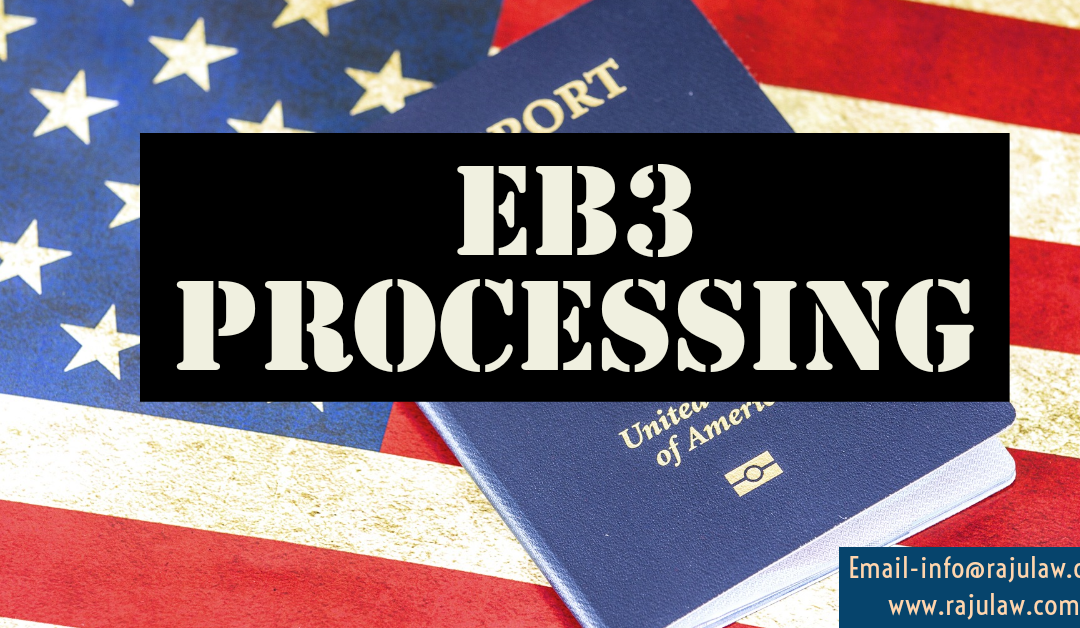EB-3 is one of the employment-based green card application processes–within this third preference of employment based petition, a U.S. employer can ask for a permanent residency petition of his/her alien (non-American) employee. It gives the holder indefinite/permanent residency to live and work in the United States as with other green cards.
People can apply for EB-3 (PERM) under three categories:
- Professionals: Persons whose job requires at least a U.S. baccalaureate or foreign equivalent degree and are a member of the professions.
- Skilled worker: Persons who meet the educational, training, or experience requirements of the job opportunity. Relevant post-secondary education may be considered as training and at least 2 years of job experience is required for this category.
- Unskilled worker: Persons performing unskilled labor requiring less than 2 years of training or experience, not of a temporary or seasonal nature.
The process is almost the same for three categories except the advertisement part. The whole process, including the processing time, is described below:
Step 1: Formulate job duties and minimum requirements
The first step in the process is a series of correspondence between the attorney, employer, and employee to establish the crucial details of the job for which the employee is being sponsored. This includes job title, job duties, minimum education and experience requirements, job location, number of employees being supervised, and other vital details. The employer must articulate the job requirements based on DOL regulations and realistic business practices. The employee must be able to show that she possessed the job requirements when accepting the offer. Previous experience and education must be adequately documented. Changes in the job duties, minimum requirements, or location later down the road could require beginning the process anew.
Step 2: Program Electronic Review Management (PERM) Labor Certification
PERM application is submitted to the Department of Labor (DOL). This process takes approximately 10-16 months.
- Once the job details have been established, the employer has to submit an online PWD request to the Department of Labor (DOL). DOL will determine the prevailing wage for the position in the specified geographic location, based on the job duties, minimum requirements, and other details. If a collective bargaining agreement governs the wage for the position, documentation is submitted to DOL to show this.
PWD sets the minimum wage that the employer must be willing to pay the employee when the employee becomes a legal permanent resident. Currently, DOL issues a prevailing wage determination in 4-5 months.
- The next step is job advertisement and recruitment. The employer needs to conduct a widespread job advertisement, interviewing the candidates, and ultimately determine that no US workers are qualified, willing, and available to take the job.
In this phase, the employer needs to post a job advertisement in a Local Newspaper and State Workforce Agency Website to attract U.S. Workers. This process takes approximately 2 months.
There are three additional recruitment steps required for the professionals and skilled workers. Perhaps the ads will be valid for 180 days, the employer needs to follow a strict timeline for these steps and keep records.
If a willing and qualified US worker applies for the position, you will need to stop the process, wait at least six months, and then re-test the labor market, perhaps with modified criteria.
- When the recruitment period ends with no able, willing, and qualified US workers, the employer has to prepare and file the ETA-9089 PERM application and file it with the DOL. Moving onto this process, the employer needs to wait 30 days since the last ad expires. PERM processing is currently taking about 8-9 months but could take significantly longer if the case is audited. However, the chance of the case being audited is small- nationally, the audit rate is about 25%, but with CBK, the rate is less than 5%.
Based on the above, it is reasonable to expect the Labor Certification stage (Aforementioned processes) to take approximately 12 months or more if there is an audit.
Step 3: Form I-140 (Immigrant Petition)
Once the Department approves the PERM labor certification of Labor, the next step is for the employer to submit a Form I-140 to USCIS. The Form I-140 is the immigrant petition, and the US employer files it on behalf of the foreign worker. Once the form I-140 is filed, it usually takes 6-9 months to respond from USCIS. The US employer can also elect to pay an additional $1,440 for premium processing to receive a response in 15 days. If USCIS has any concerns about the petition, they may render a Request for Evidence (RFE). This can also slow down the processing time.Form I-140 is filed to USCIS within 6 months of PERM approval. This form is especially for the employer to show their ability to pay the wage offered and the foreign national possesses the education, experience and skills required in the PERM application. To prove the ability, the employer needs to submit a profit and loss statement, balance sheets and sometimes personal financial information of the owner.
Step 4: Wait for the priority date to become current
Depending on the green card category and the country of chargeability, immigrant visa number may not be immediately available. However, if the priority date is current when the PERM is approved, the next step is to file the I-485 application together with the I-140.
If, after approval of the I-140 immigrant visa petition, the priority date is not within three months of current on the most recent visa bulletin, monitoring services can be offered.
Step 5: File I-485
I-485 is a personal green card application filed by the employee named in the I-140 petition and by his/her derivative family members (spouse and children). As long as the priority date remains current, it can be filed after I-140 approval or at the same time as the I-140.
Adjustment of the status application focuses on the employee’s eligibility to receive a green card (e.g., absence of criminal history or other grounds of inadmissibility).
Step 6: Attend biometrics appointment
The applicant will likely receive a biometrics appointment notice about 1-2 months after we file the paperwork. This will be in the USCIS office closest to your place of residence.
Step 7: Prepare for and attend the interview with the USCIS officer
About 12 months after filing the paperwork, the employer will receive an interview notice. Interview wait time varies greatly among different USCIS field offices.
At the I-485 interview, the immigration officer will review the employee’s green card application and their underlying immigration file. At the time of the interview, the employee needs to confirm that the job offer is still available for him, produce all the original civil documents, immigration status documents (H1B approvals, visa stamps, SEVIS documents), and previously completed medical exam on form I-693 in a closed envelope.
Green cards are usually approved from 2 weeks to 2 months after the interview. However, on rare occasions, when Visa Bulletin retrogression and a visa number is no longer available after the successful interview, I-485 will be sent to the National Benefits Center. In that scenario, USCIS will approve a green card as soon as the visa number becomes available again.
ANY TIMING PROVIDED ABOVE IS AN APPROXIMATE ESTIMATION BASED ON RECENT EXPERIENCE. FUTURE PROCESSING CAN BE SIGNIFICANTLY DIFFERENT.




